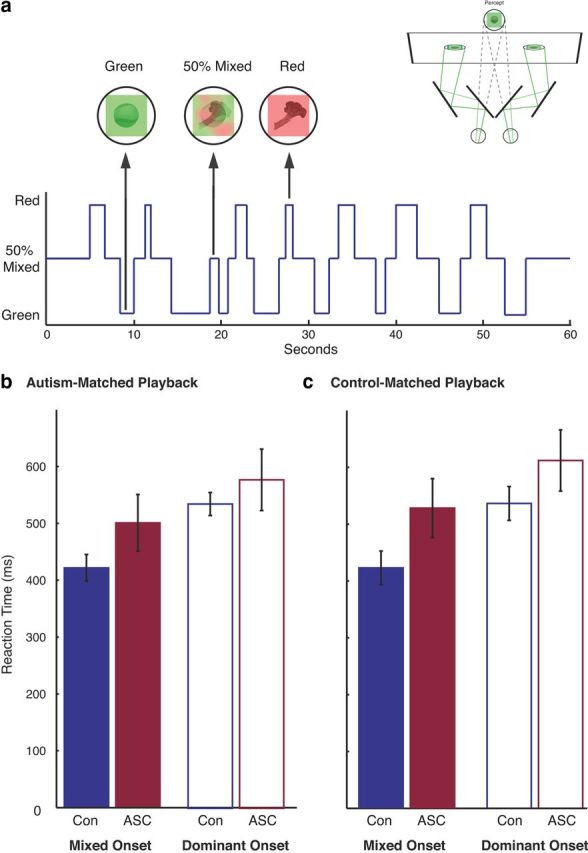Figure 4.

Sudden-onset rivalry playback experiment. a, To test whether individuals with and without ASCs have different response latencies to report perceptual changes during rivalry, we designed a control experiment in which participants viewed a sequence of playback rivalry alternations in which computer-generated mixed stimuli (50% blends of the two stimuli displayed in each trial) interposed dominant stimulus presentations with instantaneous transitions. b, c, Response latencies to detect the sudden onset of mixed (solid bars) and single-image (open bars) stimuli during the playback sequences drawn from the ASC (b) or control (c) rivalry reports. Although individuals with ASCs demonstrated atypical dynamics during actual binocular rivalry, the results of our sudden-onset control experiment demonstrated no significant differences in response latency compare with a sequence of sudden stimuli onsets between ASC and control participants. In all plots, error bars represent 1 SEM.
